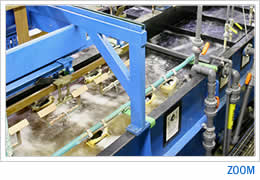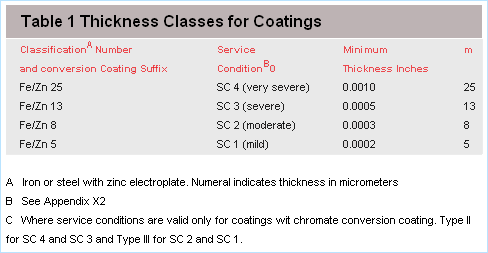Metal Plating Services
Cadmium Plating
Cadmium is a generally bright silvery white, supplementary treatments for Type II can be golden, iridescent, amber, black or olive drab. Cadmium corrosion resistance is very good, especially with Type II finish.

Type II shows no corrosion effects after 96 hours of 5% salt spray exposure. Steel parts with UTS of 150,000 psi and above, which are machined, ground, cold formed or cold straightened after heat treatment, may require stress relief before cleaning and plating. Steel parts over Rc 33 hardness shall be given a post-bake for the relief of hydrogen embrittlement.
Copper Plating
Copper can be applied in a variety of finishes from matte to shiny. It has good corrosion resistance when used as undercoat. A number of copper processes are available, each designed for a specific purpose:
- Brightness, to eliminate the need for buffing
- High speed for electroforming
- Fine grain for masking to prevent case hardening
Nickel Plating
Nickel plating is a versatile process that satisfies a wide range of needs. Depending on the process and conditions, nickel can be deposited as a soft or hard finish, ranging from 150-500 Vickers. The color ranges from a bright finish similar to stainless steel in color, to a dull grey or light grey (almost white) color. Corrosion resistance is a function of thickness. Nickel also has a low coefficient of thermal expansion and is magnetic. All steel parts having a hardness of Rc-40 or greater require a post bake 375 25F for 3 hours.
Zinc Plating
Zinc plating is a widely used coating for the corrosion protection of steel. It is used on stampings, fasteners, and automotive components, providing an excellent base for painting. Zinc is usually provided in a chromated condition, which ranges from blue bright, clear to yellow iridescent, to black. Corrosion resistance is good with the yellow chromates reaching 96 hours neutral salt spray to white corrosion. The new generation of clear, trivalent chromates perform equally as well. Older formulations of clear chromates can be expected to reach 12 hours of salt spray resistance before white corrosion. Red rust remains a function of thickness.
High strength steel (tensile strength greater than 1700 MPa) shall not be electroplated. Stress relief: Steel parts with ultimate tensile strength 1000 MPa and above that have been machined, ground, cold formed, or cold straightened, can be stress relieved at a minimum of 375F for three hours or more before cleaning and plating.
Hydrogen embrittlement relief: All electroplated parts 1200 MPa or higher shall be baked at 375F for three hours or more within four hours after electroplating.

Zinc Nickel Plating
Zinc nickel is an alloy plate consisting of electrodeposited zinc and nickel. When a chromate conversion coating is applied, this finish offers some of the best corrosion resistance available, in excess of 1000 hours salt spray when tested per ASTM B117. The finish is functional and not for aesthetics as the alloy lends itself to a vast array of colors after chromating from light pale yellow to dark purples. The finish offers a good base for painting or other coatings and it was originally developed as a replacement for cadmium plating.
Chrome Plating
Chrome plating provides excellent hardness (HRc68-74) and wear resistance. Chrome plating has a low coefficient of friction, and is resistant to heat and chemicals.
Silver Plating
Silver plating offers several advantages as a finish. It is one of the best electrical conductors and is easily soldered, although that capability of silver plating decreases with age. Silver plating also has excellent lubricity and smear characteristics for anti-galling fuses on static seals, bushings, etc. The color ranges of silver plating from white matte to very bright in appearance, but it will tarnish easily. Silver plating offers good corrosion resistance, depending on the base metal. Hardness varies from about 90 Brinnell to about 135 Brinnell, based on the process and plating conditions.
Tin Plating
Tin plating is both soft and very ductile. The color of matte tin is gray-white and bright tin has a very high luster in fused condition and is silver in appearance. Corrosion resistance is fair, with coated items meeting 24 hour 5% salt spray requirement; solderability is excellent. Tin is not good for low temperature applications because it changes structure and loses adhesion when exposed to temperatures below -40C.
A bright finish can be provided on tin by specifying Bright Tin plate. The deposit shows excellent corrosion resistance and solderability. A matte finish is preferred on electronic components because of the phenomenon of wiskering, which can lead to the short-circuiting of electrical components.
Electroless Nickel Plating
Electroless nickel is useful for maintaining inside dimensions and irregular shapes where uniform assembly tolerances are required. The color of electroless nickel is similar to stainless steel. Electroless nickel plates uniformly in recesses and cavities and does not build up on edges. Corrosion resistance in electroless nickel is good for coatings over .001″ thickness. Medium phosphorus electroless nickel is the most commonly used coating. High phosphorus is used primarily for increased corrosion resistance and in food grade applications. Mid and high phosphorus electroless nickel deposits are hard as deposited (HRc40-45). These are hardened by baking to produce a coating similar in hardness to hard chromium (HRc 65-70).
Masking
Masking is performed on many of the parts we process using a variety of means for selectively coating the hardware. Paints, waxes, tapes, plugs, mechanical masks, and even other finishes are used to protect the areas which are to be free of plating, anodizing, or other finishes.
For more information about how our Metal Plating services such as Cadmium Plating, Copper Plating, Nickel Plating, Zinc Plating or Chrome Plating can improve your next project, contact us or request a quote (you can upload a schematic). We also provide Silver Plating, Chrome Plating, Tin Plating, Electroless Nickel, and Masking services.



